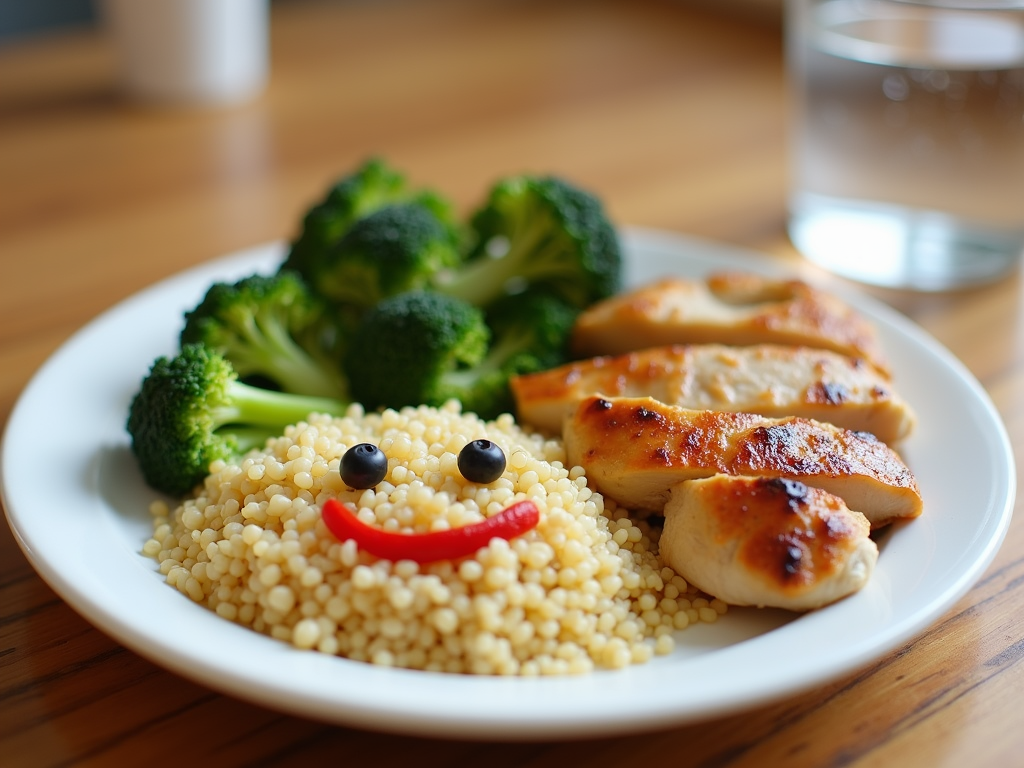Living with FPIES can be overwhelming, but with the right knowledge and strategies, you can create safe and enjoyable meal plans for your child. This guide offers insights, tips, and recipes to help you navigate hypoallergenic diets with confidence.
Understanding FPIES and Hypoallergenic Diets
Food Protein-Induced Enterocolitis Syndrome (FPIES) is a type of food allergy that primarily affects infants and young children. Unlike traditional allergies, FPIES reactions are delayed and can cause severe gastrointestinal symptoms, such as vomiting, diarrhea, and dehydration. Common trigger foods include rice, oats, dairy, soy, and certain proteins.
Managing FPIES requires a strict hypoallergenic diet that eliminates trigger foods while ensuring the child receives adequate nutrition. This can be challenging, as many common foods may need to be avoided. However, with careful planning and guidance from healthcare professionals, it's possible to create safe and enjoyable meal plans for children with FPIES.

A Parent's Journey: Discovering FPIES
Imagine being a new parent, excited to introduce your baby to solid foods, only to find that each new food seems to cause distress. That's what happened to Sarah when her daughter, Emma, started showing signs of FPIES. After numerous doctor visits and tests, Emma was diagnosed with FPIES, and Sarah had to learn how to navigate a world of hypoallergenic diets.
"It was overwhelming at first," Sarah recalls. "I had to become a food detective, scrutinizing every label and ingredient. But over time, I found safe foods that Emma could enjoy, and I even discovered some delicious recipes that the whole family loves."
Sarah's story is not uncommon. Many parents of children with FPIES face similar challenges, but with persistence and support, they can find ways to manage the condition effectively.
Creating Safe Meal Plans for Hypoallergenic Diets
When planning meals for a child with FPIES, safety is the top priority. Here are some tips to help you create hypoallergenic meal plans:
- Work with a healthcare professional: Consult with a pediatric allergist or dietitian who specializes in FPIES. They can help you identify trigger foods and develop a personalized meal plan.
- Start with safe foods: Begin with foods that are less likely to cause reactions, such as certain fruits, vegetables, and meats. Gradually introduce new foods one at a time, monitoring for any adverse reactions.
- Read labels carefully: Many processed foods contain hidden allergens. Learn to read food labels thoroughly and look for potential trigger ingredients.
- Keep a food diary: Track your child's food intake and any symptoms they experience. This can help you identify patterns and pinpoint trigger foods.
- Plan ahead: Meal planning can be a lifesaver. Create a weekly menu with safe recipes and snacks to ensure you always have hypoallergenic options on hand.

FPIES-Friendly Recipes for Children
Finding recipes that are both safe and appealing to children can be a challenge, but it's not impossible. Here are a few FPIES-friendly recipes to try:
- Quinoa and Vegetable Stir-Fry: Cook quinoa according to package instructions. Sauté safe vegetables like zucchini, carrots, and bell peppers in olive oil. Mix with quinoa and season with salt and pepper.
- Homemade Chicken Nuggets: Cut chicken breast into small pieces. Dip in a mixture of gluten-free flour and water, then coat with crushed cornflakes. Bake at 375°F for 20 minutes or until cooked through.
- Fruit Smoothie: Blend safe fruits like bananas, berries, and mango with coconut milk or another hypoallergenic milk alternative.
Remember to always check with your healthcare provider before introducing new foods or recipes.
Managing Acute FPIES Reactions
Despite your best efforts, there may be times when your child experiences an acute FPIES reaction. It's important to know how to respond:
- Recognize the symptoms: Acute FPIES reactions typically occur 1-4 hours after ingesting a trigger food and can include repetitive vomiting, lethargy, and pallor.
- Seek medical attention: If your child shows signs of an acute reaction, contact your healthcare provider immediately. In severe cases, emergency medical care may be necessary.
- Provide supportive care: Keep your child hydrated and comfortable. Follow your doctor's instructions for managing the reaction.
- Document the incident: Record what food was eaten, the symptoms experienced, and how the reaction was managed. This information can help you and your healthcare team refine your child's meal plan.

Nutritional Considerations for Hypoallergenic Diets
Ensuring that your child receives adequate nutrition while on a hypoallergenic diet is crucial. Here are some tips to help you maintain a balanced diet:
- Focus on whole foods: Emphasize fresh fruits, vegetables, lean proteins, and safe grains to provide essential nutrients.
- Supplement when necessary: Your healthcare provider may recommend supplements to fill any nutritional gaps. Common supplements for children with FPIES include calcium, vitamin D, and iron.
- Monitor growth and development: Regular check-ups with your pediatrician can help ensure your child is growing and developing appropriately.
Building a Support Network
Managing FPIES can be isolating, but you don't have to do it alone. Building a support network can provide emotional support and practical advice:
- Join a support group: Look for local or online groups for parents of children with FPIES. Sharing experiences and tips can be incredibly helpful.
- Connect with other parents: Reach out to friends, family, or other parents in your community who may be dealing with similar challenges.
- Educate your child's caregivers: Ensure that teachers, babysitters, and other caregivers understand your child's dietary needs and how to respond in case of a reaction.

Conclusion
Navigating FPIES and hypoallergenic diets can be challenging, but with the right knowledge and strategies, you can create safe and enjoyable meal plans for your child. Remember to work closely with healthcare professionals, stay vigilant about food safety, and seek support when needed. By doing so, you can help your child thrive despite the challenges of FPIES.
Discuss Here